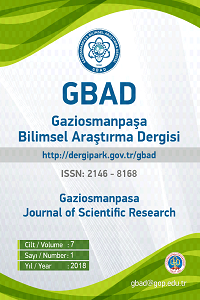Tavuk Dışkısının Çevre Sorunu Olmaktan Çıkarılmasında Uygulanan Yöntemler
Kanatlı hayvanlardan canlı ağırlığının %3–4’ü kadar günlük dışkı elde edilmektedir. Ortalama olarak bir kümes hayvanı 22 kg/yıl dışkı üretmektedir. Türkiye’de yaklaşık 7 milyon ton kanatlı dışkısı çevre sorunu yaratmaktadır. Diğer taraftan, yıllık yedi milyon ton atık sorunu yaşayan tavukçuluk sektörü, “Koku Yönetmeliği” nedeniyle de cezai yaptırımlarla karşı karşıya kalmış bulunmaktadır. Tavuk atıklarının ekonomik olarak değerlendirilmesinde yem, gübre ve biyogaz uygulamaları dikkat çekmektedir. Bu uygulamalarda kullanılan yöntemler arasında farklılıklar bulunmakta, bu ise atıkların en uygun biçimde değerlendirilmesi ile ilgili yöntem belirlemeye ilişkin sorunları da beraberinde getirmektedir. Tavuk dışkısından yem olarak yararlanmayı kısıtlayan sağlık endişesi, gübre olarak işlenmesine yönelik maliyet sorunları ve biyogaz olarak değerlendirilmesinde karşılaşılan teknik sorunlar kullanım alanlarını sınırlamaktadır. Tavuk dışkısının atık olarak işlenmesinde aerobik ve anaerobik işlemler, kompostlama, yakma gibi yöntemlerin yanı sıra son yıllarda farklı kurutma teknikleri de kullanılmaktadır. Türkiye’de tavukçuluk endüstrisinin ilerlemesinin gelecek yıllarda da devam edeceği tahmin edilmektedir. Bu nedenle, en uygun atık değerlendirme yönteminin ve stratejisinin belirlenmesinde yarar bulunmaktadır. Topraktan alınan besin maddesinin yine toprağa zararsız olarak geri dönüşümünün sağlandığı yöntemleri en çevreci bir yöntem olarak kabul edildiğinde; tavuk dışkısının organik gübre olarak kullanılması, onu çevre sorunu yaratan atık olmaktan çıkaracak ve tarımda kullanılmasıyla üretimde katkısı artacaktır. Bu nedenle, tavuk dışkısından gübre üretmeye yönelik teknolojilerin geliştirilmesine gereksinimler bulunmaktadır.
Anahtar Kelimeler:
Çevre, gübre, katı atık, kurutma, mikroorganizma, kümes hayvanları
The Applied Methods for Removal of Poultry Feces That Creates Environmental Problem
Poultry are produced daily the feces of 3 to 4% by body weight. On the average, the rate of one bird excreta was adopted a 22 kg/year into the poultry house. Approximately 7 million tones of poultry feces creates environmental problems in Turkey. On the other hand, poultry sector suffering from seven million tons of waste is faced criminal penalties due to "Odor Regulation", which entered into force at the beginning of 2012. Feed, fertilizer and biogas applications are noteworthy in the economic evaluation of poultry waste. There are differences between the methods used in these applications, if this is the method for the evaluation of these wastes to determine the most appropriate way that it brings about the problems. Restricting health concern to benefit from the feces of chickens as feed, cost issues treated it as fertilizer and technical problems encountered in the evaluation of its as biogas which delimitate the areas of use. Aerobic and anaerobic processing as a waste managing operations of poultry feces, composting, such as burning, as well as the methods used in recent years, different drying techniques. The poultry industry progress in Turkey is expected to continue in the coming years. For this reason, the determination of the most appropriate waste assessment methodology and strategy are useful. Nutrients from the soil return to the soil as a harmless which was considered as the most environmentally friendly method; the use of poultry feces as organic fertilizer together with environmental problem of waste being created it out, it has been observed useful to increase the impact of it evaluating in organic agriculture. Thus, there is a need to develop technologies for producing fertilizer from poultry feces
Keywords:
Drying, environment, fertilizers, microorganism, poultry, solid waste,
- ISSN: 2146-8168
- Yayın Aralığı: Yılda 3 Sayı
- Başlangıç: 2012
- Yayıncı: Tokat Gaziosmanpaşa Üniversitesi
Sayıdaki Diğer Makaleler
Tahir GÜR, Tuncay DİLCİ, İbrahim COŞKUN
Tarımsal Kobi’lerin Kırsal Kalkınmadaki Rolü (Tokat Merkez ve Niksar İlçeleri Örneği)
Halil KIZILASLAN, Ö. Faruk KÖSAL
Esnek Gruplar Üzerinde Bazı Cebirsel Uygulamalar
Tarihi Niksar Kırk Kızlar Türbesinin Sismik Davranışı
Tavuk Dışkısının Çevre Sorunu Olmaktan Çıkarılmasında Uygulanan Yöntemler
